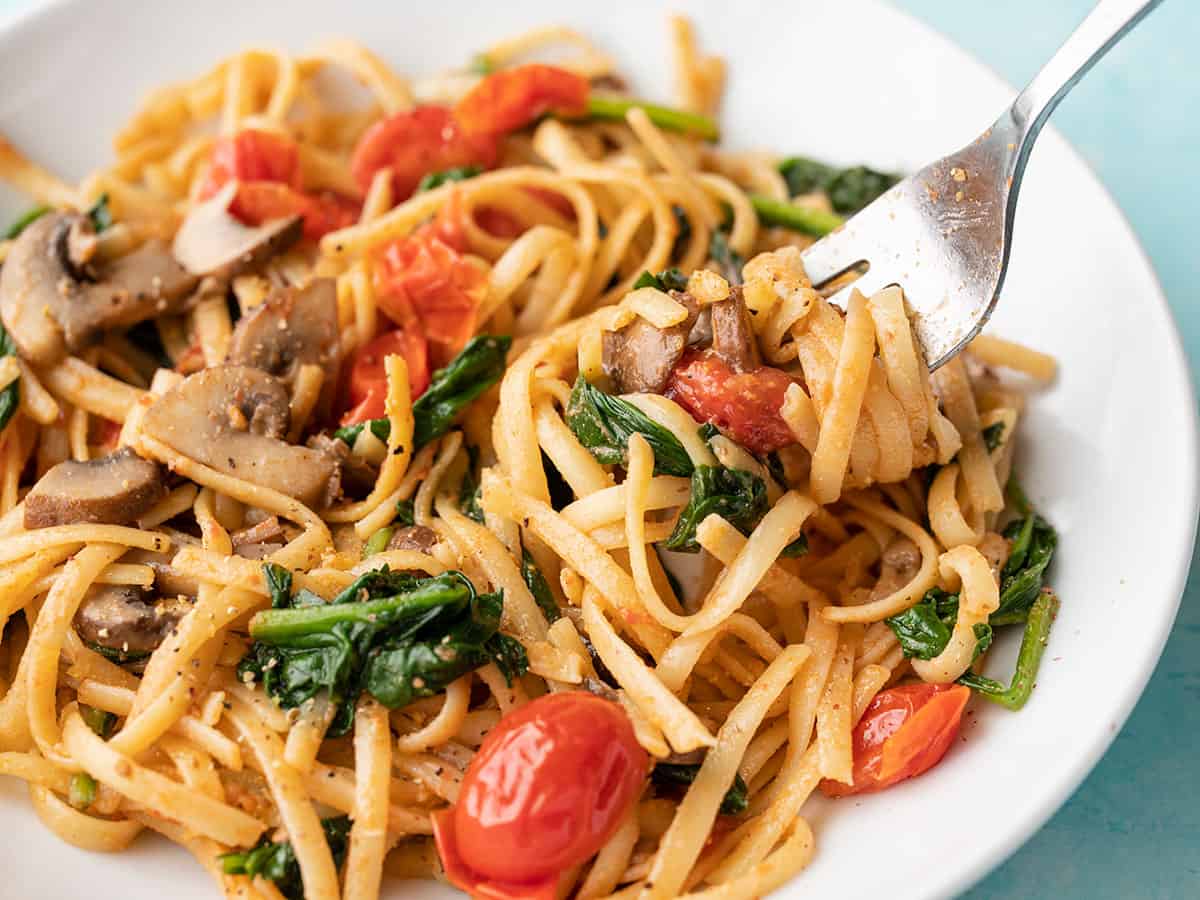Embark on a culinary journey exploring the vibrant world of flexitarian pasta dishes, where the rich tapestry of plant-based sauces takes center stage. Imagine the vibrant hues of sun-dried tomatoes swirling in a creamy cashew sauce, clinging to perfectly al dente pasta. Picture the earthy aroma of mushroom ragù, its deep umami notes dancing on your palate. This exploration delves into the art of creating delicious and satisfying pasta meals that embrace both plant-based goodness and the occasional indulgence of meat or seafood, offering a flexible and flavorful approach to healthy eating.
We’ll uncover the secrets to crafting three exquisite plant-based sauces – each with its unique flavor profile and texture – and discover how to pair them perfectly with a variety of pasta shapes. Learn step-by-step techniques, from selecting the freshest ingredients to mastering the art of sauce-making, ensuring your pasta creations are both visually stunning and bursting with flavor. We’ll also explore recipe variations, offering creative ways to adapt these dishes to different dietary needs and preferences, making delicious flexitarian pasta accessible to everyone.
Plant-Based Sauce Recipes

These three plant-based pasta sauce recipes offer diverse flavor profiles and textures, showcasing the versatility of plant-based cooking. Each recipe emphasizes fresh, vibrant ingredients to create a delicious and nutritious addition to your flexitarian pasta dishes. The recipes below provide step-by-step instructions and highlight the role of each ingredient in achieving the desired flavor and texture.
Creamy Tomato Sauce
This sauce delivers a rich, velvety texture and a bright, tangy tomato flavor. The cashew cream adds a luxurious mouthfeel without any dairy.
- Sauté Aromatics: In a large pan, sauté 1 chopped onion and 2 cloves of minced garlic in 2 tablespoons of olive oil until softened, about 5 minutes. The onion provides sweetness and depth, while the garlic adds a pungent, savory note.
- Add Tomatoes: Stir in 2 (28-ounce) cans of crushed tomatoes, 1 teaspoon of dried oregano, ½ teaspoon of dried basil, and a pinch of red pepper flakes for a touch of heat. The oregano and basil provide classic Italian herbal notes, complementing the tomato’s acidity.
- Simmer and Blend: Bring the sauce to a simmer, then reduce heat and cook for 15-20 minutes, stirring occasionally, allowing the flavors to meld. This slow simmering intensifies the tomato flavor and thickens the sauce.
- Cashew Cream: While the sauce simmers, blend ½ cup of soaked cashews with ½ cup of water until completely smooth and creamy. The cashews create a rich, dairy-like creaminess.
- Combine and Season: Stir the cashew cream into the tomato sauce. Season with salt and pepper to taste. Adjust seasonings to your preference.
Pesto Sauce
This vibrant green sauce is bursting with fresh, herbaceous flavors and a slightly nutty undertone from the pine nuts. Its bright, fresh flavor is a perfect complement to pasta.
- Combine Ingredients: In a food processor, combine 2 cups of packed fresh basil leaves, ½ cup of pine nuts, 2 cloves of garlic, ¼ cup of grated Parmesan cheese (optional, for a richer flavor), and ½ cup of olive oil. The basil is the star, providing a fresh, peppery flavor. The pine nuts add a subtle nuttiness and creaminess. Garlic provides a pungent, savory base. Olive oil emulsifies the ingredients and adds richness.
- Process Until Smooth: Process until a smooth paste forms, scraping down the sides as needed. The processing time will determine the texture; a longer process creates a smoother pesto.
- Adjust Seasoning: Season with salt and pepper to taste. A squeeze of lemon juice can brighten the flavor.
Creamy Mushroom Sauce
This earthy and savory sauce boasts a luxuriously creamy texture without using any cream. The mushrooms provide a deep umami flavor, complemented by the richness of nutritional yeast.
- Sauté Mushrooms: In a large pan, sauté 1 pound of sliced cremini mushrooms in 2 tablespoons of olive oil until softened and browned, about 8-10 minutes. The mushrooms release their moisture and develop a rich, savory flavor during sautéing.
- Add Aromatics: Add 1 chopped onion and 2 cloves of minced garlic and sauté for another 2-3 minutes until fragrant. The onion adds sweetness, while the garlic adds a pungent, savory note.
- Nutritional Yeast: Stir in ¼ cup of nutritional yeast, 2 tablespoons of nutritional yeast provides a cheesy flavor and creamy texture.
- Thicken (Optional): If desired, whisk in 1 tablespoon of cornstarch mixed with 2 tablespoons of water to thicken the sauce. The cornstarch helps to create a thicker, creamier consistency.
- Season: Season with salt, pepper, and a pinch of thyme or sage for added depth of flavor. Thyme or sage complements the earthy mushroom flavor.
Nutritional Comparison of Plant-Based Sauces
The nutritional benefits of these sauces vary depending on the ingredients. The creamy tomato sauce is rich in lycopene (an antioxidant) from the tomatoes and healthy fats from the cashews. The pesto sauce is a good source of vitamin K and antioxidants from the basil. The creamy mushroom sauce provides a good source of selenium and B vitamins from the mushrooms and protein from the nutritional yeast. All three sauces are relatively low in saturated fat and cholesterol, making them healthier alternatives to traditional cream-based sauces. However, it’s important to note that the nutritional content can vary based on the specific ingredients and quantities used.
From the creamy embrace of a cashew-based tomato sauce to the robust depth of a mushroom ragù, the world of flexitarian pasta offers endless possibilities for culinary creativity. This exploration has unveiled the secrets to crafting plant-based sauces that are not only delicious but also nutritionally beneficial, highlighting the versatility of pasta shapes and their harmonious pairings. Remember, the journey of creating delightful flexitarian pasta dishes is a personal one; feel free to experiment, adapt, and most importantly, enjoy the flavorful results. Let your creativity flow, and savor every bite of these healthy and satisfying meals.
Question & Answer Hub
Can I use gluten-free pasta in these recipes?
Absolutely! Many gluten-free pasta options are available, and they work well in these recipes. Be mindful that cooking times may vary slightly.
How long can I store leftover pasta?
Store leftover pasta in an airtight container in the refrigerator for up to 3-4 days.
Can I make the sauces ahead of time?
Yes! Most of these sauces can be made a day or two in advance, allowing the flavors to meld. Store them in airtight containers in the refrigerator.
What are some good substitutes for the plant-based proteins suggested?
Depending on the recipe, you can often substitute lentils, chickpeas, or even crumbled tofu for other plant-based protein sources.


